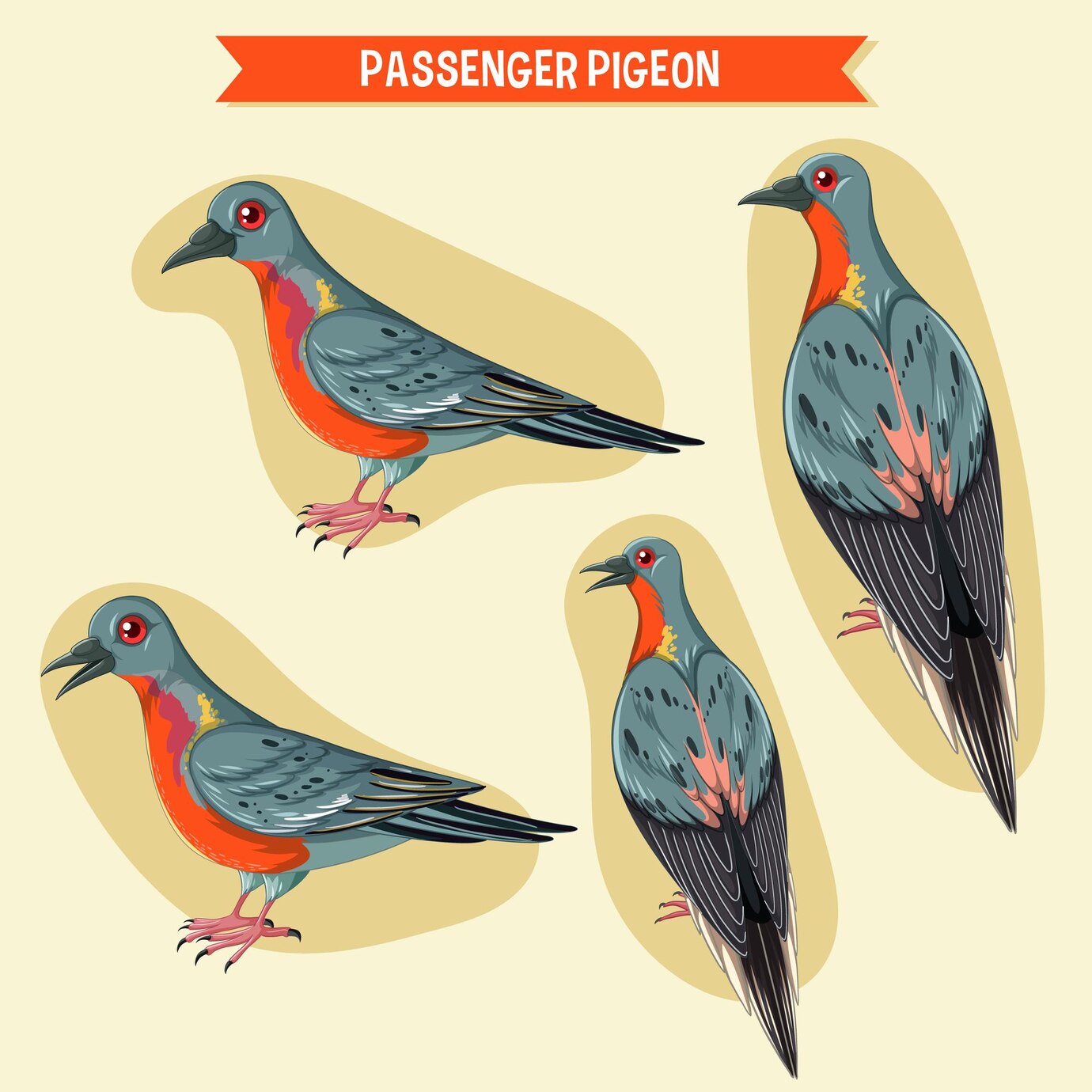
I doubt anyone or anything – newspapers, magazines, TV news shows, or tweets – will commemorate the landmark event of September 1, 1914.
No drum roll, no banners, just a sad asterisk in history.
On September 1, 1914, Martha, believed to be the world’s last passenger pigeon, died.
The passenger pigeon numbered in the billions during the 19th century, yet disappeared from the earth by the early 20th century. At one time the birds were the most numerous in North America, numbering around 3 billion, and possibly as high as 5 billion. The pigeons traveled in groups, eating and nesting together, then moved on. They roamed from the southern shores along the Gulf Coast to woodlands in the northern states and Canada. The densely packed birds, airborne together, offered easy prey.
The birds needed vast forestlands to support their population. Deforestation and slaughter by hunters for their meat, tasty and cheap, rapidly dwindled the population. The pigeons produced only one egg per year, and their reproduction rate could not make up for the multitudes killed.
The passenger pigeon may have faced extinction eventually because of an inability to adapt and share the continent with newcomers, but humans never gave them a chance. The end occurred quickly, foreshadowing future episodes in the extinction of an entire species.
I doubt many people noticed the passenger pigeon’s demise when it occurred. The public was too preoccupied with the major event of the time – World War I. There is no one alive today who remembers seeing a live passenger pigeon. Out of sight, out of mind, what we never knew or experienced we do not miss.
The term climate change was decades from becoming part of our everyday lexicon, and conservation was a novel idea introduced to Americans by a number of forward-thinking politicians, scientists, artists, and the early 20th-century equivalent of hippies.
President Theodore Roosevelt, an avid outdoorsman and conservationist, made the preservation of the environment a priority during his administration, creating the National Forest Service, five national parks, four game refuges, and 51 national bird reservations.
We may not mourn the passenger pigeon, but how many animals and plants and habitats must disappear before stating hey, you know what? We do miss them…
Wouldn’t it be wonderful if environmental disasters like the demise of the passenger pigeon due to human disregard and indifference never occurs again – at least not in our country?
“We have become great because of the lavish use of our resources. But the time has come to inquire seriously what will happen when our forests are gone, when the coal, the iron, the oil, and the gas are exhausted, when the soils have still further impoverished and washed into the streams, polluting the rivers, denuding the fields and obstructing navigation.” – Theodore Roosevelt

